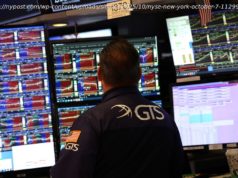The near-term costs of steel and aluminum tariffs are manageable; the longer-term costs of potential trade wars with the entire world are greater
Today, we take pity upon the supply chain managers, the financial planners, the logisticians and procurement chiefs at every American company that uses steel and aluminum in its products.
They face a difficult few months trying to adapt their businesses to new tariffs on metals imported from Canada, Mexico and the European Union, which start at midnight Thursday. Some prices are likely to rise, and some business operations may even turn out to be noneconomical in this new trade policy landscape, and shutter entirely.
It’s worth keeping some perspective on the direct, immediate damage from the tariffs and likely retaliation from trading partners. Prices for inputs like steel move around all the time, and businesses are generally pretty good at adapting. Those supply chain managers and logisticians are good at their jobs.
But there’s a longer-term danger for the American economy that’s a lot bigger than the 25 percent tax on imported steel and 10 percent on imported aluminum. It is that the administration’s trade policy is displaying an erratic, improvised, us-against-the-world quality that is anathema to businesses that must make long-term decisions about how to deploy capital.
In a market economy, businesses can thrive despite bad policies. Go to any rich country, and you’ll find certain tax and regulatory policies that seem bonkers to an outsider. Japan taxes imported American beef at high rates — 50 percent until recently. Most stores in Germany have to close on Sunday. Go to Sweden or South Korea or Canada and you can find rules that impede the free market, yet businesses do just fine.
That’s because those policies may be inefficient, but they are stable in their inefficiency. German stores build into their business models the expectation that there will be no Sunday sales, and a beef importer in Japan builds the tariff into its prices.
That stability is part of what differentiates rich countries from poor ones. In poor countries, it tends to be harder for businesses to make long-term investments in part because they don’t know what tax and regulatory policies might come down upon them in the future.
And the Trump administration’s trade policies in 2018 have been nothing if not inconsistent and unpredictable. The sequence of events on steel and aluminum over the last three months is a prime example.
If you’re a little confused at seeing headlines about the imposition of tariffs on steel and aluminum on major trading partners, it is understandable. Didn’t that already happen?
The administration first announced the tariffs back in early March, portraying them as an aggressive effort to fight the perfidious behavior of China and other countries to subsidize their domestic metals industries, undermining American national security.
Then, soon after they were announced, the administration gave exemptions to most major American allies, including the European Union, Canada and Mexico. It extended them by 30 days at the start of May, though that was a down-to-the-wire moment.
With those 30 days now elapsed, the administration has this time gone the other direction and removed the exemptions. It’s now tariffs for everybody, including the United States’ closest military allies. And even that is subject to change as the Trump administration continues to dangle relief on steel and aluminum tariffs in exchange for other concessions.
There has been extensive behind-the-scenes jockeying over those exemptions for the last three months, but there has been no real public accounting of what criteria led to those exemptions in the first place, or what led to their removal. And it is not at all clear how taxing imports of Canadian and European steel and aluminum is going to get China to cut subsidies for its producers.
The imposition of the tariffs on Canada and Mexico added another layer of complexity to the sluggish renegotiation of the North American Free Trade Agreement.
American negotiations with China over its trade practices have been even more erratic. One day, tariffs on $150 billion of imports from China appeared imminent, the next they were put on pause amid infighting by the president’s trade negotiation team.
Even more remarkable is that the Trump administration is willing to make threats against all the nation’s major trading partners at the same time. A trade war with China would be a big deal; a trade war with Europe would be a big deal; a trade war with Canada and Mexico would be a big deal. The United States is flirting with all three at once.
So imagine you’re a business trying to decide whether to build a big new manufacturing facility in Ohio or Indiana or Michigan. You make sophisticated industrial equipment that is exported around the world — a sector where the United States has considerable competitive advantages, and where the jobs tend to pay well. You just got a tax cut, and your stock price has been rising, lowering your cost of capital.
But simultaneously you have no idea how much it will cost to buy the steel and aluminum in your products in the years ahead. You have no idea if we’ll be in the middle of a trade war with all the countries that are likely to be interested in buying your products.
You may be hoping that the Trump administration’s trade brinkmanship will lead to better access for your products abroad. But in the meantime, that’s a whole lot of political risk that will weigh on your decisions to hire and invest.
There will be a lot of focus in the weeks ahead on the direct, first-round effects of the steel and aluminum tariffs. No doubt certain products will cost a bit more. Those supply chain managers are facing some late nights.
This bigger cost is harder to measure, but that doesn’t make it less real. That is the risk that the United States is not as stable and reliable a place to do business as you once thought.
Home
United States
USA — Financial The Economy Can Handle Steel and Aluminum Tariffs. The Real Risk Is...






